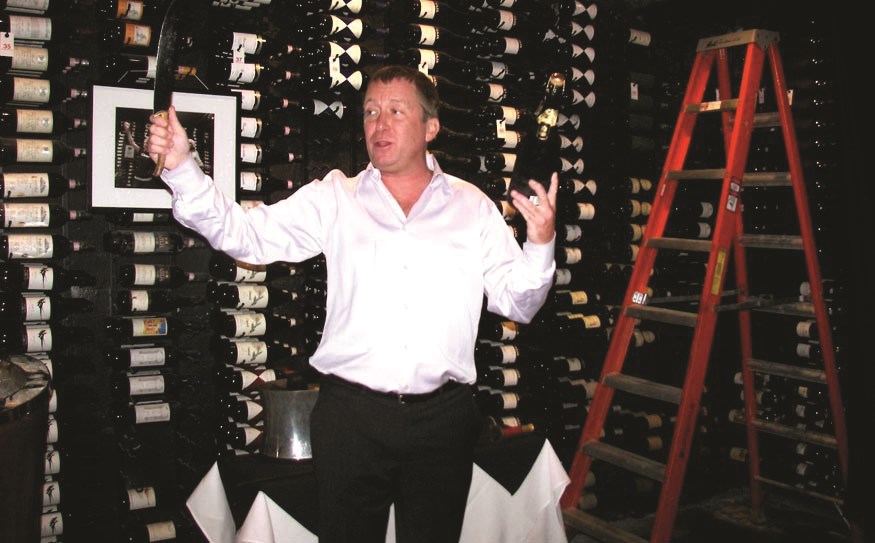The oyster shells at Bearfoot Bistro’s annual throwdown have long been gathered up and dumped in the bin. And the tunes from the House Party are still ringing in your head as you conjure up the unique notes mizunara (which translates to “water- oak”) brought to the samples at the Japanese whiskey tasting seminar.
Once again, as fall fades into the sunset, so does Whistler’s biggest and best food and drink fest, Cornucopia. And while this year’s events started Nov. 4, don’t feel like you’ve entirely missed out, folks. You can still catch some great seminars and spectacular events, like Saturday’s authentic, traditional Fall Feast at the Squamish Lil’wat Cultural Centre (SLCC), which includes a multi-course meal featuring roast bison bavette, storytelling and Spo7ez Performers in regalia sharing songs from the Squamish and Lil’wat Nations.
Plus, you couldn’t pick a better way to mark Cornucopia’s final weekend than Saturday’s wine seminar at the Aava Hotel, led by none other than the legendary BC Restaurant Hall of Famer, André Saint- Jacques. Founder of the aforementioned Bearfoot Bistro, André is equally celebrated for slicing open bottles of champagne with a single swipe of a sabre as he is for the mythic— and, sadly discontinued—bacchanalian Masqueraves hosted at Bearfoot during past Cornucopias. Picture creatively painted, bare-breasted women serving up whatever was on offer, including canapés presented on the fair, bare, painted bod of a beautiful woman reclining on a table.
In the meantime, as you conjure up Cornucopias past, book tickets for the present, or daydream about the future, let me offer you a few tasty tidbits from the ABCs of all things kitchen and cuisine. Good, quick conversation starters at any table—pub, dining room, or otherwise.
A is for...
Artisanal. You have to reach a bit to get to the roots of this adjective, since it wasn’t accepted usage in the original Oxford English Dictionary. But an adjective it is, folks, meaning: related to, or characteristic of an artisan; of a product, especially food or drink, made in a traditional or non-mechanized way, as in “artisanal bread.”
So, please, package designers and writers of all things menu-ish or promotional: Don’t describe your products as “artisan bread” or “artisan cheese.”
By the world’s trustiest Oxford dictionary, “artisan” is a noun, from the Italian artigiano, in turn from the Latin artitianus, meaning “to instruct in arts.” An artisan is someone who practises or cultivates an art; in short, they’re an artist.
So if your menu, sandwich board or label proclaims “artisan bread” or “artisan pizza,”
it’s actually saying you’re offering “artist bread” or “artist pizza.” What you really want your customers to know is that you offer artisanal products, meaning they’ve been made with care in a traditional and, as the dictionary says, non-mechanized, non- industrialized way.
A is also for aril. This lovely word is mostly used by botanists, but you can now sprinkle it into conversations at whatever table you find yourself.
In one more lesson pointing up the many advantages of reading your packaging, I’ll confess, ladies and gentlemen, that I first learned about arils from a bag of President’s Choice frozen pomegranate arils. (While not as tasty or beautiful as the real McCoy from fresh pomegranates, they’re sure handy for adding zing to a winter salad.)
“Aril” is from the Latin arillus, (also the root of the Spanish arillos, meaning “raisins”). It means a specialized outgrowth that partially or completely covers a seed. The first recorded use of “aril” in English was in Rousseau’s Botanical of 1794: “two seeds covered with an aril or detached coat.”
If you keep reading that pomegranate package, you’ll notice the French translation, arilles de grenade—a big tip-off as to the source of that grenadine syrup you love in your favourite cocktail, alcoholic or otherwise.
B is for...
Bison, and for bavette, the centrepiece of that delicious-sounding roast bison bavette with cheeks and tomato jus at the traditional Fall Feast at the SLCC. Before we get into bavette, I just want to set the record straight on bison. While we Canucks usually call those big beasts “buffalo,” there are no buffalo in North America. The Smithsonian Institute tells us true buffalo are native only to Africa and Asia—Cape buffalo and water buffalo. North America only has native bison, and that’s what you’ll get Saturday night at the SLCC.
As for bavette, that’s a French term for flank steak, a loosely textured, highly flavoured flat cut also called the butcher’s cut, since butchers often prize it for their own plates. Enjoy!
C is for...
Cornucopia. Of course! Think “horn of plenty”—the horn-shaped basket that’s a symbol of Thanksgiving from which tumbles all kinds of harvest bounty.
The horn of plenty, writes Edith Hamilton in the classic Mythology: Timeless Tales of Gods and Heroes, is based on the Greek myth of Amalthea. By one myth, Amalthea was a goat on whose milk Zeus was fed as an infant boy. By another, she was a nymph who owned the goat. Either way, she had a horn that was “always full of whatever food or drink anyone wanted.”
In Latin, this was a Cornu copiae, the horn that Hercules broke off the river god, Achelous, who had taken on the form of a bull to fight him. It, too, was always magically full of fruits and flowers—a perfect trope for Whistler’s signature food and wine fest.




